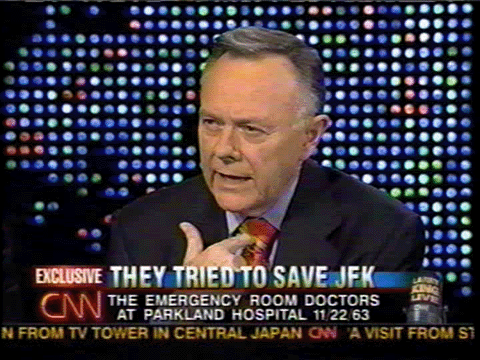What was the name of the nurse, and where can we read her statement on the matter?
I believe it's Diana Bowron. She merited a whole chapter named after her in Livingstone's 1993 book "Killing the Truth".
Todd Vaughan wrote:
During Dr. Carrico's interview, he mentions a nurse named Diana Bowron.
In the 1990’s conspiracy author Harrison Livingstone (High Treason, Killing
the Truth) located, corresponded with, and interviewed Bowron. I just happen
to have a cassette tape copy of the telephone interview he did with her.
Livingstone also published a transcript of the interview in his 1993 book,
"Killing the Truth", and he also included a statement that Diana Bowron
wrote for him.
In both the interview and the statement, Diana Bowron claims that she saw
President Kennedy’s throat wound while Kennedy was still in the limousine
in the Parkland Hospital ambulance bay. In her written statement for
Livingstone she says:
"I turned his head, and seeing the entry wound in the front of the throat, I could
feel no pulse at the jugular."
Bowron gives no more details in the interview with Livingstone, simply stating
that she saw the throat wound while the President was still in the car.
Seeing the wound while the President was still in the car certainly implies that
the throat wound may have been at least visible above the collar line, and
possibly actually located above the collar line, assuming that Bowron didn’t
manipulate the collar at all while feeling for the pulse.
But incredibly, Livingstone never elicits any more information about this from
Bowron. He never asks her how she was able to see the wound or whether
or not it was above the collar line.
And Bowron never explains, and Livingstone never asks, how she cut off the
President's clothes.
McKnight writes:
"Nurse Diane Bowron told Specter “...Miss Henchliffe and I cut off his clothing.”
(6H 136) The instrument used was a scalpel, Carrico told Weisberg. The
record of this conversation can be found in the Weisberg Subject Index File
under “Dr. Carrico,” items 02 and 03."
Apparently, Bowron is a "source" for the use of scalpels only because she help cut off the President's clothing. How do we know scalpels were used? Dr. Carrico "told" Weisberg.
There is a December 1971 note made by Weisberg concerning Dr. Carrico:
"Clothes cut off by nurses while he did his own emergency work, which precluded
watching them. Folded back. Usual to cut off and unbutton collar and top shirt.
Speed essential. Usual to cut tie a single thickness and pull out, not to cut through
knot. Thinks likely when I described nick in knot and slits in shirt front that slit made
when cutting tie."
We have no transcript; only Weisberg's interpretation. Carrico may have ventured the tie knot nick was made during removal of clothes, but doesn't say it was a scalpel used. Weisberg thinks a scalpel was used to remove the clothing, therefore Dr. Carrico "confirms" it.
Carrico told the Commission he didn't examine the clothing.
Mr. SPECTER - Did you have any occasion or opportunity to examine the
President's clothing?
Dr. CARRICO - We did not do that.
Mr. SPECTER - And was no examination of clothing made, Dr. Carrico?
Dr. CARRICO - Again, this was a matter of time. The clothes were removed
the nurses, as is the usual practice, and the full attention was devoted to
trying to resuscitate the President.


Dr. Ronald C. Jones in 2003 points to neck wound location. (from Vaughan) |